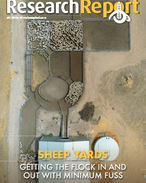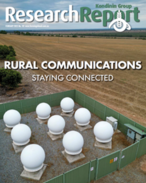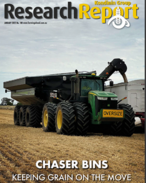This article is 7 years old. Images might not display.
The responsibility to avoid herbicide residues in cereal, pulse and oilseed grains which are delivered off farm sits squarely with grain growers and their advisers.
The Grains Research and Development Corporation has a handy fact sheet to help grain growers with their pre-harvest chemical applications particularly in relation to pesticide and herbicide residue levels.
According to the GRDC fact sheet, the application of herbicides late in the season to prevent weeds setting seed or to desiccate crops must be carried out with caution and in line with herbicide label recommendations. It is essential to check if these practices are acceptable to buyers, as in some situations markets have extremely low or even zero tolerance to some pesticide and herbicide residues.
The fact sheet notes that product labels must be followed and withholding periods adhered to for all herbicides.
Key points for chemical residues include:
- Application of herbicides close to harvest increases the possibility of detectable herbicide residues being present in harvested grain.
- Maximum residue limits (MRLs) vary according to herbicide, crop and market. Compliance with Australian MRLs does not guarantee the grain will meet an importing country’s MRL. It is important to know the destination of your grain and to check both domestic and importing countries’ MRLs to determine what herbicides are permitted on that crop. Breaches of MRLs can lead to rejected grain both domestically and by the importing country.
- Grain handlers and marketers regularly conduct surveillance on grain receivals for residues. The National Residue Survey also conducts ongoing residue testing of grain.
- Late season herbicide use must strictly comply with the registered label to ensure Australian MRLs are not breached.
- Growers should seek advice from their grain buyers before using late applications of herbicides. This is very important for seed that is intended for sprouting.
Key points for chemical registrations include:
- Barley: Diquat (e.g. Reglone®) and Sharpen® are the only herbicides registered for pre-harvest weed control in barley, however a minor use permit for certain glyphosate formulations is currently available for use on feed barley only. Growers must be aware that some barley maltsters have restrictions on all pre-harvest use of herbicides. Consult with buyers before use.
- Registrations for glyphosate use on cereals and canola vary across different labels.
- Sharpen® (saflufenacil) has been recently registered for late-season application in pulses and cereals.
Growers and their advisers need to be aware of the implications of herbicide applications and the role they play in ensuring food health safety and in protecting the grain industry.






















